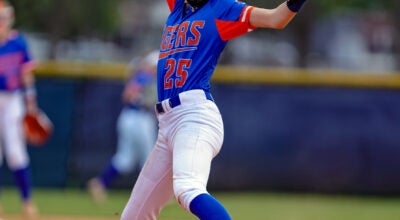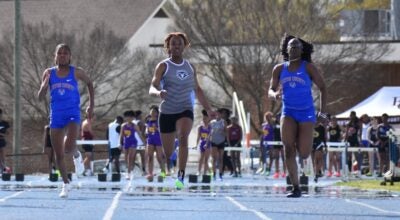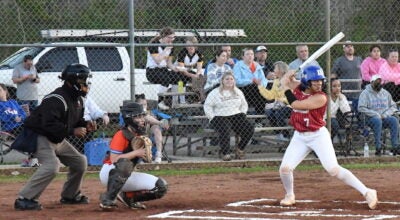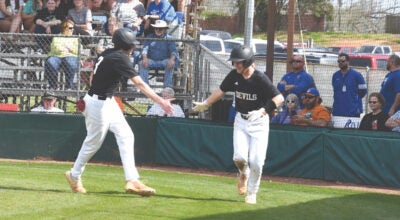Conservation board revisits dog deer hunting
Published 7:15 pm Monday, March 16, 2009
After listening to what he called a spirit of “cooperation” among the dog deer hunting community and its critics, Alabama Conservation Advisory Board member Grant Lynch asked that any action concerning dog deer hunting be tabled until the May meeting.
At last weekend’s board meeting at the Mann Museum in Montgomery, Lynch said that he wanted the committee formed last year to study the dog deer hunting problem to reconvene and report to the board in May.
“I’m encouraged by what I’ve heard,” Lynch said. “We could come back from the committee and come back to the board with ‘here’s something that we’ve found mutual ground on and we think will work going forward.’ Then we would consider all motions, taking into consideration what the committee reports back to the board.”
The board also postponed any action on saltwater fishing regulations pushed by the Coastal Conservation Association – putting pompano and Spanish mackerel in the game fish category, as well as prohibiting the use of gill nets in portions of Mobile Bay, Grand Bay and along the Gulf of Mexico beach – citing a resolution passed by the Alabama House of Representative asking the board not to take action.
The House resolution also requested that Conservation Commissioner Barnett Lawley appoint a committee consisting of a commercial seafood processor or buyer, a recreational fisherman, a charter boat industry member, a marine biologist, and a commercial fisherman to study and make a report of their findings to the conservation advisory board by January 10, 2010. The resolution also states that the committee shall hold at least two public hearings, one in Baldwin County and one in Mobile County.
Board member Bill Hatley asked that the Commissioner institute an emergency regulation regarding crop depredation requirements to eliminate feral hogs and coyotes. Currently, crop depredation permits require that the landowner show crop damage before the permit is issued.
Hatley’s request would drop the proof of crop damage to receive a depredation permit.
“We have a tremendous problem in the state right now with feral hogs and coyotes,” Hatley said. “I would like to ask the commissioner to invoke an emergency rule, something to the effect that feral swine and coyotes are considered invasive, nuisance species and that the necessity of demonstrating specific damage is not required. Normal crop depredation requires proof of damage. What I want to do is be able to eliminate feral swine that is wild in the state at any time. I want coyotes to fall into that same category.”
Lawley said an emergency regulation would only last 120 days, so the board must revisit the subject at the May meeting. Lawley, however, also voiced concern over the effect of coyotes on white-tailed deer.
“There was a study done by South Carolina at the Savannah River Project on fawns,” Lawley said. “They were looking at survival rates of fawns because of additional predation by coyotes. Their study showed they have only a 25-percent survival rate. Auburn is starting the same study at Fort Rucker to determine the predation by coyotes, but we’re not waiting on that. We want to take action.
“You would still have to have a crop depredation permit. There would be a short form to fill out. But it does not require crop damage to issue this permit. If someone questions why you’re out there hog hunting or coyote hunting at night, then it would be on our records that (you) have a depredation permit.”
Ex-officio board member Gaines Smith, Director of the Alabama Cooperative Extension System, echoed the concerns about feral swine and coyotes: “This is a serious threat to our wildlife and ecosystem. We need all hunters and your friends back home need to be aware of what the potential of this is.”
Ross Self offered a motion to change the recreational bag limit of grouper, Atlantic sharpnose shark and bonehead shark and commercial size limits for red grouper and bonehead sharks to eliminate the size limit for commercial sharks to conform to federal regulations. The new regulations would also require that fish be landed with heads and fins intact to ensure fish comply with size limits. NOAA Fisheries adopted an interim rule effective Jan. 1, 2009 that reduces the gag grouper bag limit to two fish and increases the closed season for gag from Feb. 1- March 31.
Self also made a motion to make it unlawful to display an invalid gill net placard and to add to “within 300 feet of the mouth of East Fowl River” to the prohibited areas for gill netting. Self also asked for a provision that a recreational gill net may not be set more than 300 feet from shore and that the Marine Resources Division will provide a tag for recreational gill nets and the tag must be attached when the net is in use or in transit. A provision that all entangling nets have floats at not greater than prescribed intervals was also requested. All of Self’s motions passed.
In light of testimony at the February board meeting about the practice of “gassing” rattlesnakes in gopher tortoise burrows, Raymond Jones Jr., at the request of absent board member Dr. Warren Strickland, made a motion to amend current regulations dealing with regulation 220-2-11 (Prohibited Devices or Methods of Hunting). The board passed the motion to make the introduction of gasoline or any other noxious chemical or gaseous substance into wildlife burrows, dens or retreats illegal.
Board member Louis Coles reported that Don Childree, longtime participant and former chairman of Opp Rattlesnake Festival, fully endorses the new regulation.
In other action, board member Dr. Wayne May again expressed concern that dove hunting season opens too early and should be moved to the first weekend in October. The board decided to delay approval of the 2009-2010 hunting seasons and bag limits until the biological ramifications of dove season dates could be discussed before the May 16 meeting, which will be held at a site to be determined.






